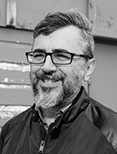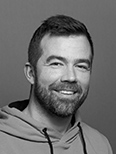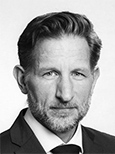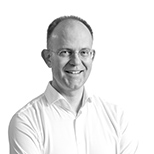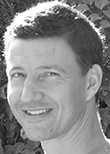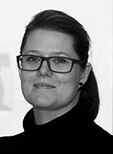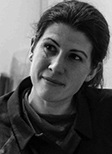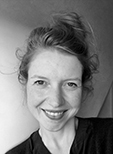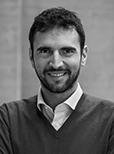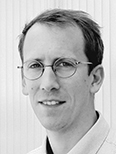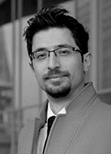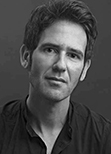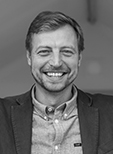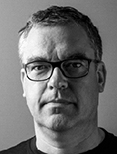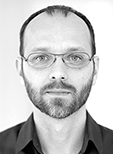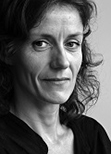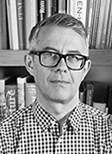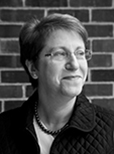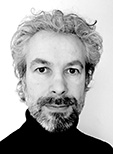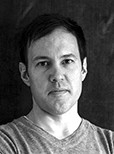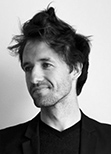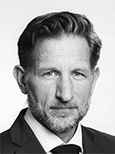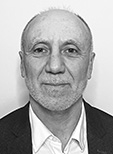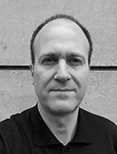Special Sessions
Special Sessions are sessions exploring novel experimental topics that extend the general conference themes. Each special session is formulated by expert researchers and gathers up to 6 speakers presenting key contributions on the session theme. All interested authors are entitled to propose a special session and to submit contributions to the special sessions for review.
Resilient built environment and communities, pre and post-disaster
|
ORNELLA lOURIO Faculty of Engineering, |
ALESSANDRO MELIS School of Architecture |
Climatic crisis and natural hazards, such as earthquake, flooding, and draughts are strongly modifying our built environment around the world. Architecture and Civil Engineering play a key role in making the urban and built environment more resilient to respond to both future crisis and recover from previous crisis. This session invites papers that explore multi-disciplinary approaches, linking architecture, structural and environmental design and retrofit, aiming to explore:
- How to adapt/transform our built environment to develop housing and neighbourhoods to make it resilient to current and future shocks.
- How to “Build Back Better” during post-disaster reconstruction. Looking at post-disaster housing strategies, resettlements, shelters, integration of structural design with UN-Habitat principles for adequate housing, and the long-term social implications.
Reimagining bureaucracy: Challenging the Structure and Architecture of legal Frameworks
|
Henriette EjstrupArchitecture, Design & Media Technology |
|
The legal frameworks of architecture are seldomly considered in the initial concept of the architectural idea – let alone discussed in architectural practice and academia. Whether we like it or not, legislations always come beforehand the actual building. Within the last century, legislations in building culture has gone from non-existing to micromanaging everything from indoor climate and levels of natural daylight, energy performance, to the functional aspects of materiality. In the coming years sustainability will become a more central part of legislation, which marks this as the time, where the building industry, professionals and researchers across boarders must discuss, what knowledge we can draw from to secure a safe transition into a sustainable building culture. And the time to be vigilant in addressing the question whether the increasing focus upon legislations in fact provide the framework for a sustainable building culture?
This special session calls for research and discussions to bring forth what knowledge can be utilized from the last decades of increasing legislative requirements? Which aspects of the legal framework works well and which do not, in regards to achieving productive architecture as a whole? Can the legal framework be hacked for better or worse, and how do we implement new requirements of sustainability, without making unforeseen legislative pit falls, that may cause more damage instead of insuring a safe common future?
Towards a Robotic Structuralism
|
mikkel k. kraghCivil and Architectural Engineering |
roberto naboniCivil and Architectural Engineering, |
This session celebrates critically the advent of robotics, and its agency onto the design, conception, and realization of architectural structures. Over the last decade, research in architectural and construction robotics has spread worldwide, in research, education, and practice. Novel material practices, structural complexity, computationally inspired tectonics are emerging as the popularisation of robotics allows designers to experiment, seamlessly, with digital design and fabrication processes. This special session will revolve around fundamental questions: how do we benefit from robots towards a more performative, creative, and efficient structuralism? How do we translate current experimental processes into the practice of the future?
The Future of Bridges: A roadmap towards circular and inclusive bridge design
|
|
Martin KnightBridges + Infrastructure |
Bridges lie at the heart of our civilization bringing growth and prosperity into peoples every days life. However, bridges are more than mere functional assets. A well designed bridge reflects mankind’s creativity and ingenuity and tells us something about our identity. However, our identity is not static. Just as social values are rapidly changing under influence of political polarization and climate crisis, the way that our bridges are commissioned and designed needs to change too.
This special session addresses the call for circular bridge design, as well as the call for an inclusive design process in which users and inhabitants can participate with local knowledge. Therefore, topics for his session can offer a technological approach, addressing new materials and computational methods to achieve better bridges. Or they can focus on the design process and the procurement of our bridges, offering ways to include the public and enhance public support. The goal is to identify a design approach, through all scales of the design, that leads to bridges that are sustainable, future proof and that are valued by society.
The architecture and structure of human wellbeing
|
Jonas HolstSchool of Architecture and Technology |
Tenna Doktor Olsen TvedebrinkDepartment of Architecture, Design & Media Technology |
Which role do architecture and engineering play in facilitating human wellbeing, and how can architects and engineers succeed in enhancing it further? These will be two of the main research questions for the proposed Special Session, which will not only center on topics related to health and healing in relation to the built environment, but considers the question of human wellbeing in broader terms: It entails among other things, as Jørn Utzon once stated, raising our embodied consciousness of the impact of the light and the sounds, the materials and the structures, such as stairs and walls, on our dwelling in and transition through built space.
Infrastructure design and socio-ecological agency: the (side-)effects of structures, systems and spaces
|
Greet De BlockCentre for Urban History |
Ditte Bendix LanngDepartment of Architecture, Design & Media Technology |
Infrastructure design manifests ubiquitously: transit and sewer systems, train stations, storm surge barriers, green corridors, urban spaces and bike paths. Does infrastructure have socio-ecological agency? And if so, what are the socio-ecological effects of these structures, systems and spaces? This session explores how infrastructure design as a space-shaping practice works to produce and sustain socio-ecological agency.
We invite papers that engage theoretical, analytical and/or case-based scrutiny of the social and ecological formations that infrastructure design interrelate with. This includes questions of, e.g., the distribution of the goods and the bads of infrastructure, the matters of concern present and absent in infrastructure design, the design intentions in relation to socio-spatial (side-)effects, and the futures of infrastructure design and its agency.
Low-carbon low-waste structures
|
DARIO PARIGIDepartment of the Built Environment |
CORENTIN FIVETStructural Xploration Lab |
The construction sector is currently experiencing increasing pressure in the challenge to alleviate its adverse environmental effects, e.g. related to global warming, material depletion, and waste management. Structures alone account for more than 50% of embodied CO2 emissions in buildings. Addressing these challenges require constantly innovating solutions in structural design, processes and materials. In the session, strategies for low-carbon low-waste structures will be addressed, such as: use of environmentally-efficient materials, circularity through use/reuse of loadbearing elements, minimization of material use through structural optimization and construction-based design, adaptive structures and flexibility of use. Finally, it will be investigated how those strategies could establish positive synergies with the architectural design process, and influence how we will design and build in the future.
Integrated Informed Design Processes: Joining urban design, architecture and engineering for a sustainable tomorrow
|
Aliakbar KamariDepartment of Engineering |
Sofie PelsmakersFaculty of Built Environment |
Carlos BañónAirLab (Arch. Intelligence Research Lab) |
Integrated building design is growing in complexity at an exponential rate. This occurs due to the variety of involved professions and managing their internal and external collaboration, application of emerging cutting edge technologies and software (i.e. BIM), as well as the design requirements that need to be addressed, i.e. sustainability concepts and building codes. Characteristically, many significant decisions that directly affect the building performance and its relationship with the environment are taken, without complete integrated knowledge and must be revisited and reconsidered. This session opens up discussions about new research-based integrated building design processes at the conceptual stages, the interrelations and trade-offs between Urban Design, Architecture and Engineering to meet project goals towards a sustainable tomorrow.
Cellulose-Based Materials in Structures and Architecture
|
Jerzy LatkaFaculty of Architecture, |
Rebecca BachInstitute of Structural Mechanics and Design |
The session will focus on cellulose-based materials and their implementation in architectural structures. Taking into account growing need for the recyclable materials, good thermal insulation, low-cost production and minimalised ecological footprint, the session will crate the opportunity to exchange the knowledge and experiences by both professionals and academics. New structural solutions, energy efficiency, implementation of cellulose based materials in building envelope will be the main topics of the session.
BE-AM on tour
|
Ulrich KnaackDelft University of Technology / Delft, The Netherlands |
Oliver TessmannTechnical University of Darmstadt |
Additive manufacturing is boosting in the field of architecture and the build environment – new technologies and new projects are developing fast and we see a new generation designers, engineers and technologists are concerning the scene. This mini-symposium wants to address this scene, would like to understand the current technologies and developments as well as potentials for the future of architecture and the build environment. To come to a discussion and outline for the next generation buildings for the build environment additive manufacturing – The annual BE-AM Symposium goes on tour to join ICSA2022.
Radical Tectonics: Aiming for absolute sustainability in structures and architecture in a time of climate crisis
|
Anne BeimRoyal Danish Academy of Fine Arts |
Urs MeisterUniversity of Liechtenstein |
Franca TrubianoUniversity of Pennsylvania |
Little time remains for us to ponder whether material structures and assemblies are marginally better than others. A radical and uncompromising vision is needed to ensure that significant changes are made to the way we think, design, and build. Needed are new tectonic insights for the physical, life cycle, and emotional context of our buildings and our urban fabric. New tectonic strategies can offer important means for redirecting resources at all levels of society. Indeed, they play a pivotal role when engineers and architects engage in urgent and complex problems such as; the growing scarcity of natural resources, the degradation of the biosphere, the need for zero CO2 emissions, and topographical to our landscapes due to flooding and rising seawater levels. This Mini-Symposium is focused on the concept of ‘Radical Tectonics’; the drive to attain absolute sustainability. It asks;
- What can be built when construction materials have the lowest possible(zero) carbon footprint and can be returned to nature without harming the environment?
- What definition of the tectonic should we strive for when looking at materials, building principles, and architectural design choices that are optimized for maximum sustainability, where lifetime scenarios, reuse, and upcycling become crucial parameters?
- What are the short- and long-term perspectives for how architects and engineers can contribute to the categorical green transformation of the building industry – here and now?
Radical Tectonics invites papers on material, structural, and architectural ecologies, principles, and technologies that aim for absolute sustainability in a time of climate crisis.
Advances in wood construction: Technology and architecture
|
Niels Martin LarsenAarhus School of Architecture |
PHILIP TIDWELLAalto University |
KIEL MOEMcGill University |
Today the unique biological, energetic and structural properties of wood are leading to a renewed focus on timber as material for construction. As the imperatives of climate change reconfigure the construction industry, wood has been highlighted for its capacity to sequester carbon dioxide and for its renewability in comparison with other construction materials. In response, the forest products sector – already among the oldest and most technologically developed areas of the building industry – has pushed forward with new strategies for production and assembly. Today 3D scanning, material tracking and automated production can be found from the forest to the factory.
This renewed interest in wood has opened new opportunities for building, but as the vocabulary of timber construction expands from ‘stick’ frames to ‘mass’ assemblies, the implications for architecture remain unclear. The imperatives of industry tend toward standardization, but each wood species possesses unique characteristics. This session calls for projects, research and analysis that exemplify the ways in which wood properties and building technologies can be engaged to clear a path for a viable development of the built environment at the intersection of materials, structures and architecture.
Adaptive Building Envelopes
|
Isak worre fogedRoyal Danish Academy |
Mikkel k. kraghAarhus University |
Building envelopes are environmentally, and physically, at the forefront of architecture’s ability to be both sustainable, expressive and human-oriented structures. While the envelope constitutes and defines the transition between conditioned and unconditioned spaces, it is frequently addressed as a static and non-permeable construction, rather than an adaptive and dynamic membrane with depth. This mini-symposium invites discussions, experiments and built works, which question and redefine ways in which the building envelope acts as an adaptive constituent of the building, responding to human needs, human behaviour, the surrounding environment and its material-structural design, fabrication, and operation. The mini-symposium brings together academia and industry through three interrelated themes:
- Material Performances for Adaptive Envelopes
- Behavioural Systems for Adaptive Envelopes
- Field Studies of Built Adaptive Envelopes
Structures and Architecture of Refurbishment: Strategies and techniques for the 21st century
|
Joaquín Antuña BernardoUniversidad Politécnica de Madrid |
Ernesto Fenollosa FornerUniversidad Politécnica de Valencia |
DimitrIs TheodossopoulosThe University of Edinburg |
The intervention in existing buildings, both to their maintenance and repair is a matter which society has to face in the next decades. For architects and engineers the intervention in existing buildings will be an important activity for the next years. It is necessary to adopt intervention criteria respectful of the building itself, the environment and the users. The main objective of this Mini Symposium is to share strategies and solutions used by different technicians from different countries, bearing in mind that we are referring not only to historical masonry structures, but also steel, wrought and cast iron and concrete structures. For this, the symposia gathers authors related to intervention in buildings from different points of view; teaching, professional (architects, engineers, builders), normative, social, ecological . . . etc. Particular emphasis will be placed on the task of unpacking interdisciplinary impressions of the difficulties and shortcomings found when approaching an intervention project. The symposium will be organized in the following sessions:
- Intervention Criteria: Heritage preservation, use modifying, maintaining architectural qualities.
- Materials and Techniques: Reproduce or modify.
- Safety of Refurbishment: Practices and codes.
- Architecture and Structure in Refurbishment: Needs and opportunities.
- Use of Refurbished Buildings: The role of owners and users.



